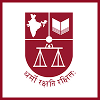Course Information
- 2024-25
- CTF214
- 5-Year B.A., LL.B. (Hons.), 3-Year LL.B. (Hons.), LL.M.
- III, IV, V
- Mar 2025
- Elective Course
This is an elective to understand federalism and explore the content of Indian constitutional federalism. We will do this by close-reading constitutional text, Constituent Assembly debates, and the assigned secondary materials.
We will first do an introductory exploration of the value and function of federalism. Why might it be useful to think of whether a constitution is federal or not? Does a federal constitution really impact the way the citizens under the constitution experience their polity? We will use this segment to make sense of the real-world meaning and implication of being federal.
Next, we will look at federalism as a conceptual question, i.e. in terms of the conceptual meaning of federalism in constitutional theory, and then as a normative question, i.e. in terms of the specific political intentions of the framers of the Constitution of India. The Indian Constitution is often
characterised by courts and commentators as “federal with a unitary bias.” We will use this segment of the course to understand and draw out some characterisations of Indian federalism in a ground-up fashion.
A federal constitution is only as good as its practice, in that federalism is not amenable to diverse institutional forms unlike other ideas such as democracy. Thus, we will next look at the constitutional practice of federalism through legislative federalism on the one hand, and fiscal federalism and resource federalism on the other. In other words, we will look at what emerges from following the money and resources in constitutional practice, in contrast with the more obvious use of state power through legislation. We will use this segment of the course to understand the mechanics of what is increasingly understood to be a centralising practice of government and reflect on some of the background conditions and social realities that may play a role in reinforcing this trend.
Finally, we will close with trying to make sense of the Indian constitutional practice tending to be centralising. Does this automatically imply – even prove – that the Indian Constitution carries a unitary bias? Or is there another way to understand it?


